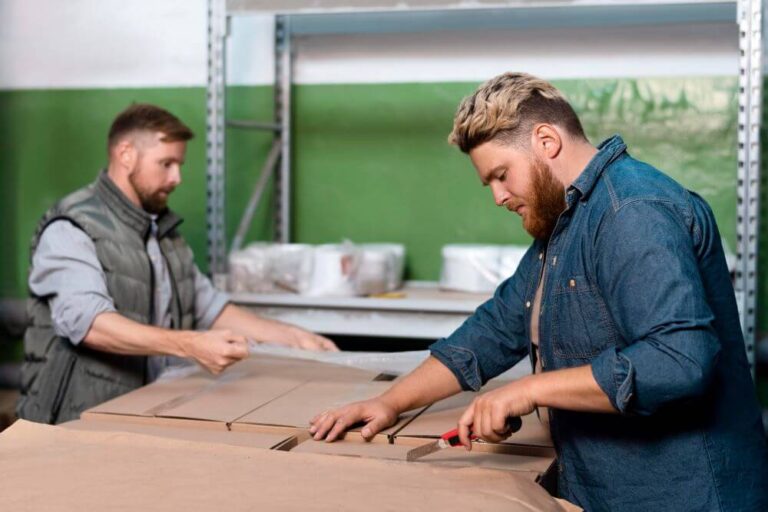When it comes to large-scale manufacturing, the materials you choose can either make or break your project.
Engineered wood, often referred to as composite wood, has emerged as a game-changer for manufacturers looking for sustainable, cost-effective, and flexible solutions. Put another way: the sky is the limit if you’re looking to build large-scale projects with engineered wood.
But what exactly is engineered wood, and why is it so popular in modern manufacturing? Let’s dive right into that.
What is Engineered Wood?
Engineered wood is made by binding together wood strands, particles, fibres, or veneers using adhesives to create a composite material. This process improves the strength and stability of the wood, making it ideal for a range of manufacturing applications.
Whether it’s used in furniture, construction, or cabinetry, engineered wood offers durability and reliability that traditional solid wood might not always deliver. For more detailed information, here’s a helpful resource: Greenly Earth.
Environmental Sustainability
One of the standout benefits of engineered wood is its positive environmental impact. By utilising wood that may otherwise go to waste—like smaller pieces, underutilised species, or even wood with defects—manufacturers can significantly reduce waste and make the most of renewable resources.
Materials like Medium-Density Fibreboard (MDF), which is made from wood fibres, are particularly efficient in this regard. The use of MDF in engineered wood products supports sustainable forestry practices and helps lower carbon emissions, making it an eco-friendly choice for large-scale projects. The use of MDF in engineered wood products supports sustainable forestry practices and helps lower carbon emissions, making it an eco-friendly choice for large-scale projects.
Choosing engineered wood combines the benefits of being environmentally responsible and also aesthetically pleasing. People connect with the look of wood in a way that’s almost visceral.
Cost-Effectiveness and Resource Efficiency
In addition to being sustainable, engineered wood is often more cost-effective than traditional solid wood. The manufacturing process allows for the use of faster-growing, smaller trees, which reduces material costs.
And not to mention, the exceptional durability and stability of engineered wood translates to it requiring less maintenance over time, saving you money on repairs and replacements.
It’s a win-win for you if you’re a manufacturer looking to keep costs down without having to compromise on quality. For a deeper dive into engineered wood versus solid timber.
Design Flexibility and Performance
The versatility of engineered wood opens up a world of design possibilities. Products like cross-laminated timber (CLT) and glulam (glue-laminated timber) offer both strength and flexibility, making them the perfect choice for innovative, large-scale projects.
Whether you’re designing complex structural elements or creating aesthetic finishes, engineered wood can be tailored to meet specific performance requirements and aesthetic goals. Its adaptability in both strength and form can enable you to push the boundaries of design and create something truly marvellous, while being eco-friendly. To further explore the design potential of engineered wood.


